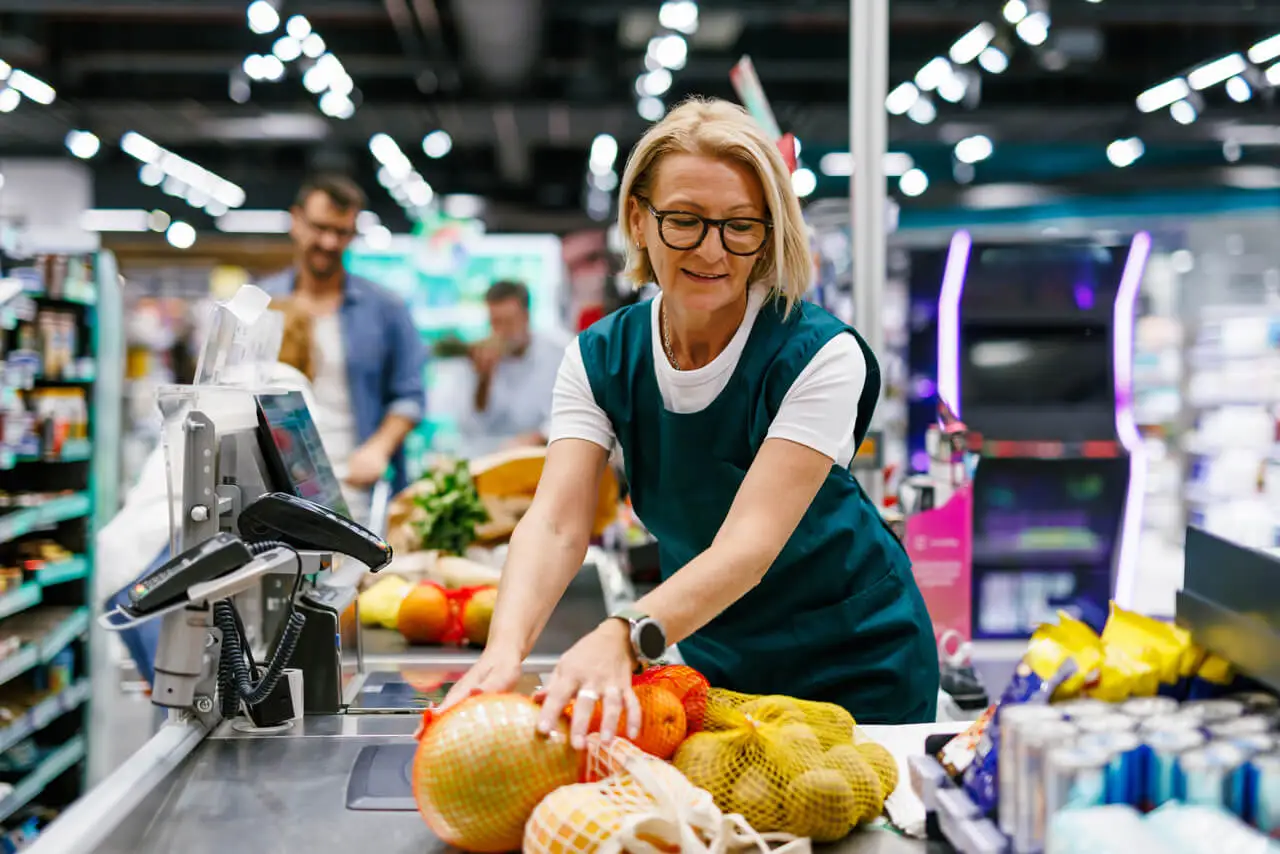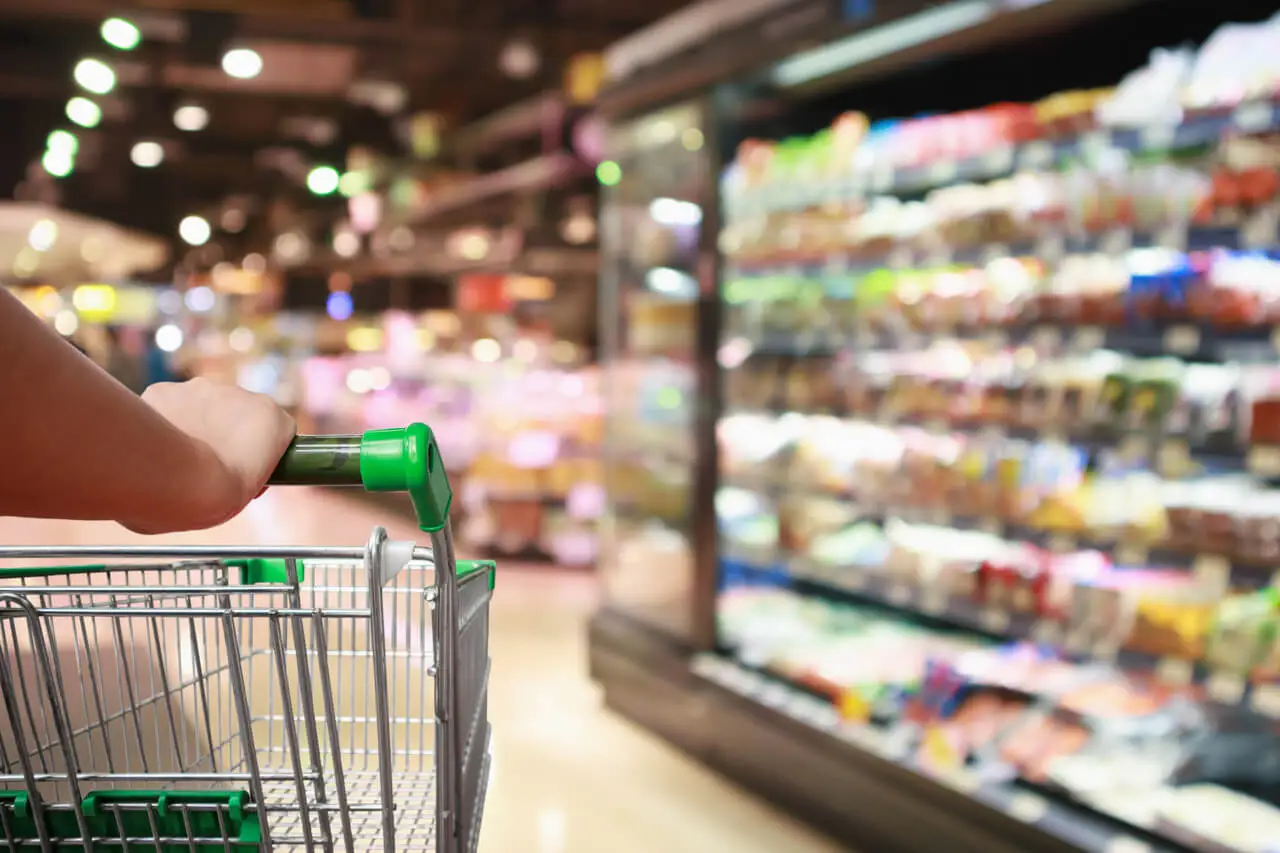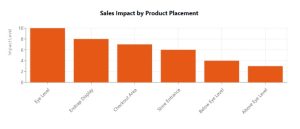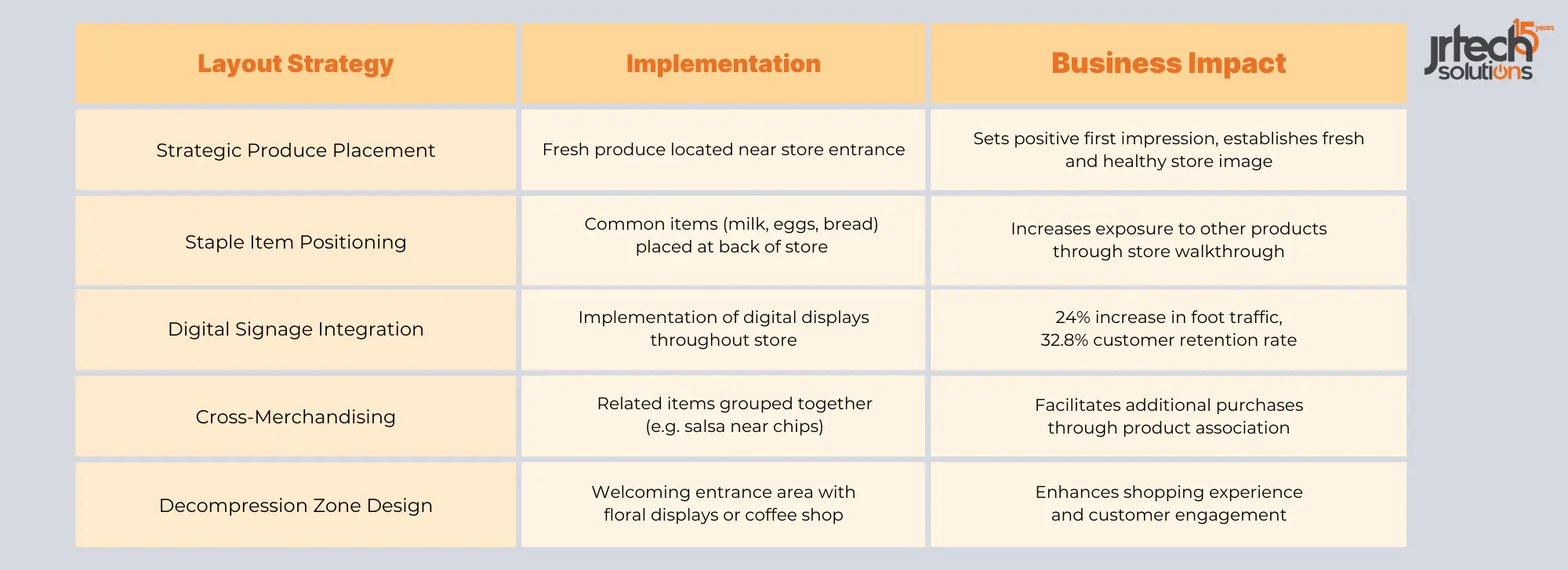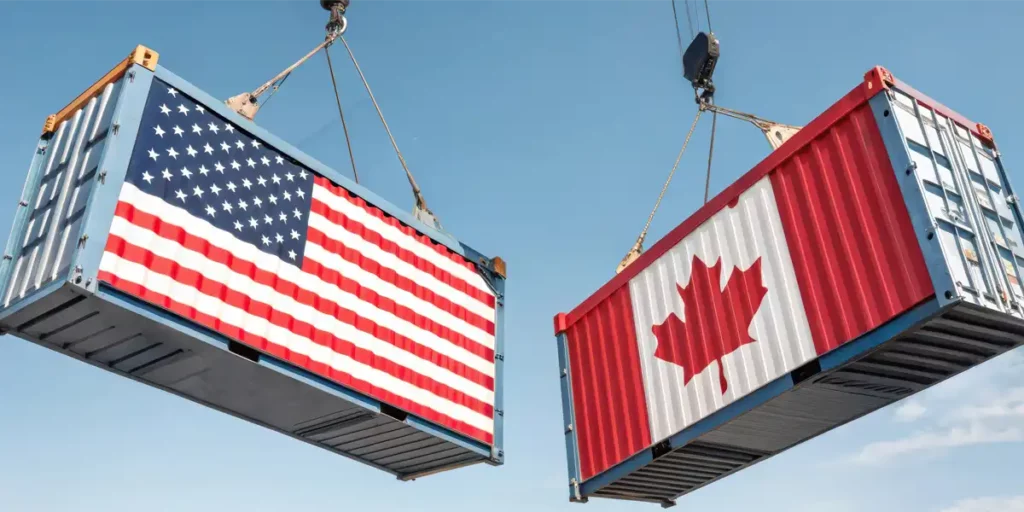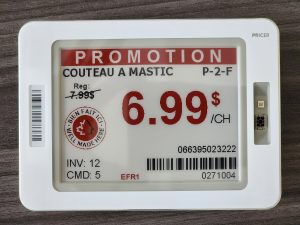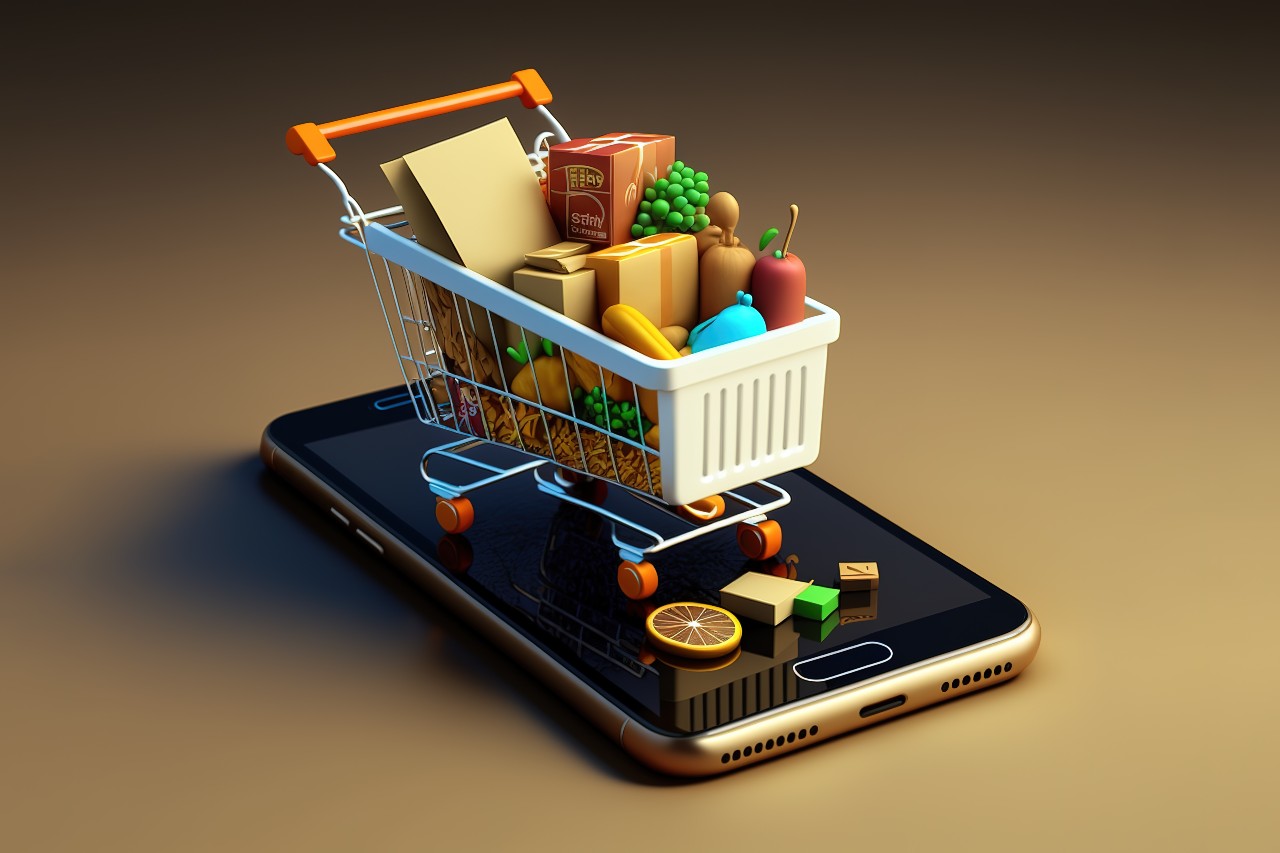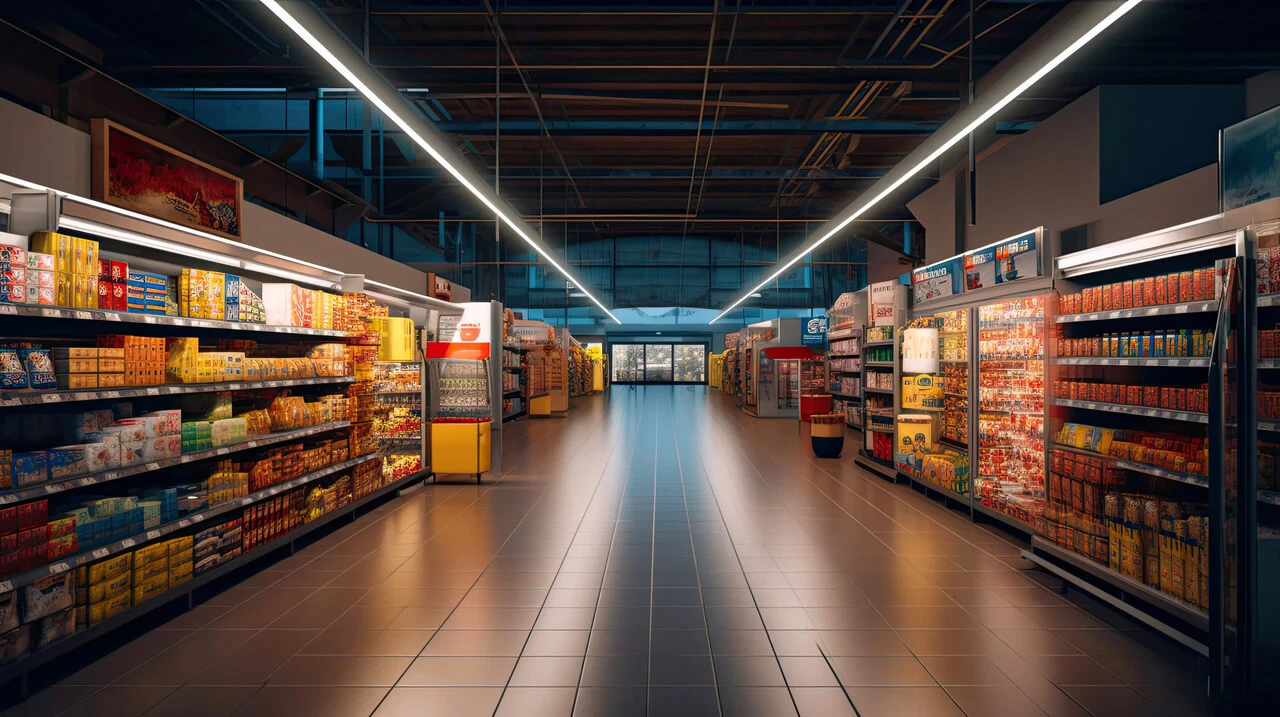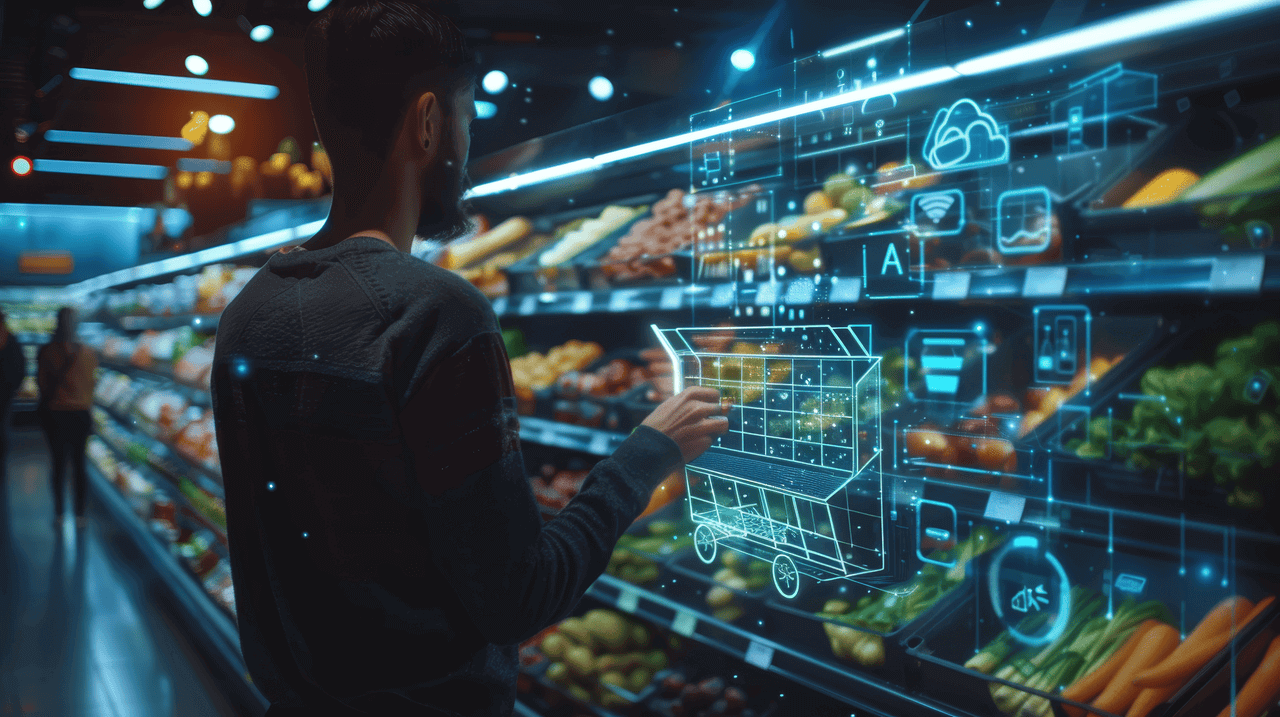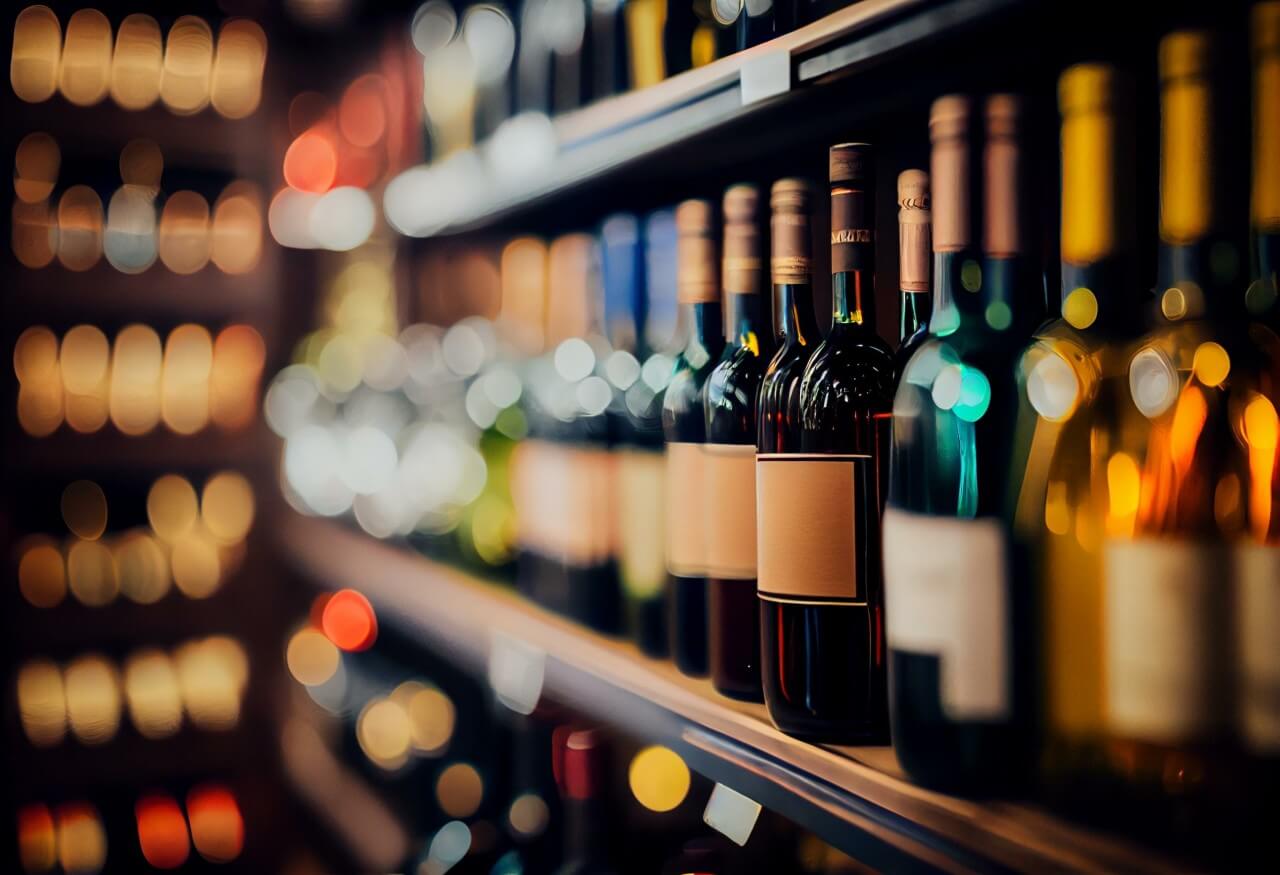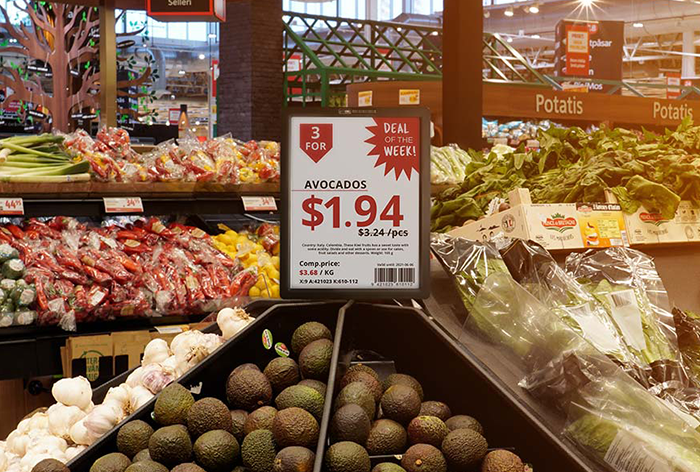Optimizing grocery store operations is an ongoing process. Retailers are facing a wave of changing consumer expectations and evolving AI-driven technologies.
What are the most effective strategies for keeping up with trends and getting ahead of competitors?
From understanding your fundamental business model to implementing the latest in digital displays and robotics, we’ve outlined five key strategies for transforming your supermarket operations in 2025.
One: Understand the supermarket business model
KEY Takeaway: The modern supermarket business model evolved from early innovations into the modern supermarket model. This model features core components and processes that enhance customer experience and business performance.
The modern supermarket business model is so widespread that it is easy to forget that grocery stores as we know them were once an innovative solution.
Origins of the modern supermarket
Piggly Wiggly
The first self-service grocery store, Piggly Wiggly, was opened by Clarence Saunders in Memphis, Tennessee, on September 11, 1916. Piggly Wiggly introduced innovations such as shopping baskets, price-marked items, organized product categories, and uniformed employees. These changes reduced labor costs, increased efficiency, and gave customers more control over their shopping experience.
King Kullen
The first “true” supermarket was King Kullen, opened by Michael J. Cullen on August 4, 1930, in Jamaica, Queens, New York. King Kullen’s format fulfilled five defining criteria of a modern supermarket: self-service, separate departments, discount pricing, chain marketing, and volume dealing. Cullen’s approach leveraged technological advancements like refrigeration and cellophane packaging.
Supermarkets today: the supermarket model
The supermarket model quickly gained popularity during the mid-20th century due to its improved efficiency and alignment with emerging consumer lifestyles.
Today, all supermarkets share a set of fundamental functions and processes. The supermarket model, defined according to the Integrated Modeling Method (IMM), offers valuable insights into these intricate workings by clearly identifying the common, core functional elements of any grocery business.
The supermarket model consists of four key components:
- Customers: The end users who purchase products from the supermarket
- Retail outlets: The physical locations where customers can buy products
- Transportation systems: Used to move products from suppliers to retail outlets
- Warehouse distribution centers: Facilities used to store products before they are shipped to retail outlets
These components work together to create the foundation of the supermarket business model, enabling efficient operations and a seamless shopping experience for customers.
The supermarket model also comprises four main processes that are key to effective operations:
- Procurement: Acquiring products from suppliers.
- Storage: Storing merchandise in warehouse distribution centers.
- Distribution: Transporting products from warehouses to retail outlets.
- Sales: Selling products to customers.
By understanding the evolution and workings of their business, today’s managers can more easily identify areas of improvement and optimize their operations, leading to improved efficiency, reduced costs, and higher customer satisfaction.
Two: Implement cutting-edge technology to simplify grocery store operations
KEY Takeaway: Today’s supermarkets are again facing change, in the form of new shopping trends and advances in technology. By adopting key technologies like Electronic Shelf Labels (ESLs) and advanced inventory management software, grocery stores can maintain a competitive edge.
As seen above, what was once considered a remarkable advance in operational efficiency is now a widespread norm.
With the advent of omnichannel shopping and AI-driven marketing and data tracking capabilities, traditional supermarkets are facing another wave of changes.
While not every business will be ready to completely overhaul their operations, there are two key technologies that have a massive impact on efficiency, cost-effectiveness and a store’s ability to maintain their competitive edge:
1. Electronic Shelf Labels (ESLs)
Electronic Shelf Labels are currently in use in many large retail outlets, including pharmacies, grocery stores and hardware stores. These paperless digital price tags use wireless technology to display and update product information digitally on retail shelves.
Controlled by a central management system so that a single employee can manage all price and product updates, including changes based on promotions or stock-out situations, these digital displays show clean, multi-coloured numbers and letters on a fully customizable screen. From QR codes to nutritional information, electronic shelf labels can show whatever is necessary.
Smart Shelf Tags look almost like regular paper shelf labels, making the transition from traditional paper labels seamless from a customer’s point of view. From a retail manager’s perspective, the tags usher in a new era of data collection, facilitated in-store communication and improved efficiency.
Electronic Shelf Labels are a fundamental technology for implementing further advanced operational functionalities via IoT.
2. Inventory management software
Another must-have for supermarkets in 2025 is inventory management software. This software assigns unique SKUs to identify each product in your store, and can be seamlessly integrated with electronic barcodes to accelerate data entry and reduce errors associated with manual processing.
Choosing the right inventory management system makes it possible to set optimal stock levels for every item in your catalog and implement a pricing automation strategy.
The software will send automated alerts when it is time to reorder and even identify what quantities are needed. It will also enable monitoring of supplier lead times.
When combined with Smart Carts, inventory management software takes inventory analytics and personalization to a new level.
Three: Integrate Self-Checkout stations to streamline payment
KEY Takeaway: Convenience is king. Self-checkout stations are leading the way to faster, more efficient and more beneficial point-of-sales experiences for both shoppers and store managers.
Retail stores in 2025 are finding new ways to offer fast, efficient checkout services, and consumers are showing their appreciation with heightened loyalty. Driven in part by the need for a solution to widespread labour shortages, self-checkout kiosks are proving to be more than just a temporary fix.
In addition, advanced contactless payment methods are key to attracting younger shoppers, and with security measures like scanner scales and security doors, you can be sure these fast checkout methods will lead to improved customer service for all.
Four: Unlock insights with Point-Of-Sale (POS) data and advanced analytics
KEY Takeaway: Actionable Point-Of-Sale data can be used to reveal essential insights and drive decision-making and improvements to grocery store operations.
Your point-of-sale (POS) data is highly valuable for acquiring key insights. Analyzing the shopping patterns captured by your POS system allows you to develop merchandising and promotional strategies based on actual customer purchasing behaviors.
By using AI-driven algorithms and data analytics, you can identify products frequently bought together, and optimize your grocery store layout accordingly for convenience and to drive impulse purchases.
Five: Save time and resources with automation and robotics
KEY Takeaway: Grocery store robots are infiltrating core operations, leading to new and improved methods and opportunities for diversifying employee profiles.
It’s one thing to simply keep up with trends. It’s another to go one step further and embrace the future of grocery store operations.
Labour shortages and changes in employee expectations are challenging the retail landscape. The solution involves reassessing your approach to staffing.
Robotics
Autonomous robots are one of the most significant innovations currently affecting the supermarket retail landscape. Capable of everything from analytics to inventory management and floor cleaning, robots are empowering grocery stores to automate core operations in new and exciting ways. They can even facilitate remote site management.
Cross-training
As some employee functions are replaced by automation and robotics, remaining human workers can benefit from cross-training that enables them to play multiple roles within the retail outlet. This not only allows managers to make the most of the available workforce, it often results in more stimulating and satisfying jobs.
Employees equipped with varied skills can provide the necessary person-to-person assistance that some shoppers need, while fulfilling other duties during times of lower demand. Competent multi-tasking employees are also potential candidates for promotion to management positions, facilitating succession planning and employee motivation.
JRTech is a leading provider of Electronic Shelf Labels and Digital Signage
The grocery store landscape is undergoing rapid change as new technologies present unique opportunities for improved operations and accelerated data insights.
Better inventory management, improved OSA, less food waste and happier customers: all this and more is possible by implementing digital solutions to solve age-old problems of supply, demand and service.
JRTech is the leading provider of Pricer Electronic Shelf Labels in North America. We are proud to provide supermarkets with top-quality digital signage and ESL solutions. Contact us to learn more.

